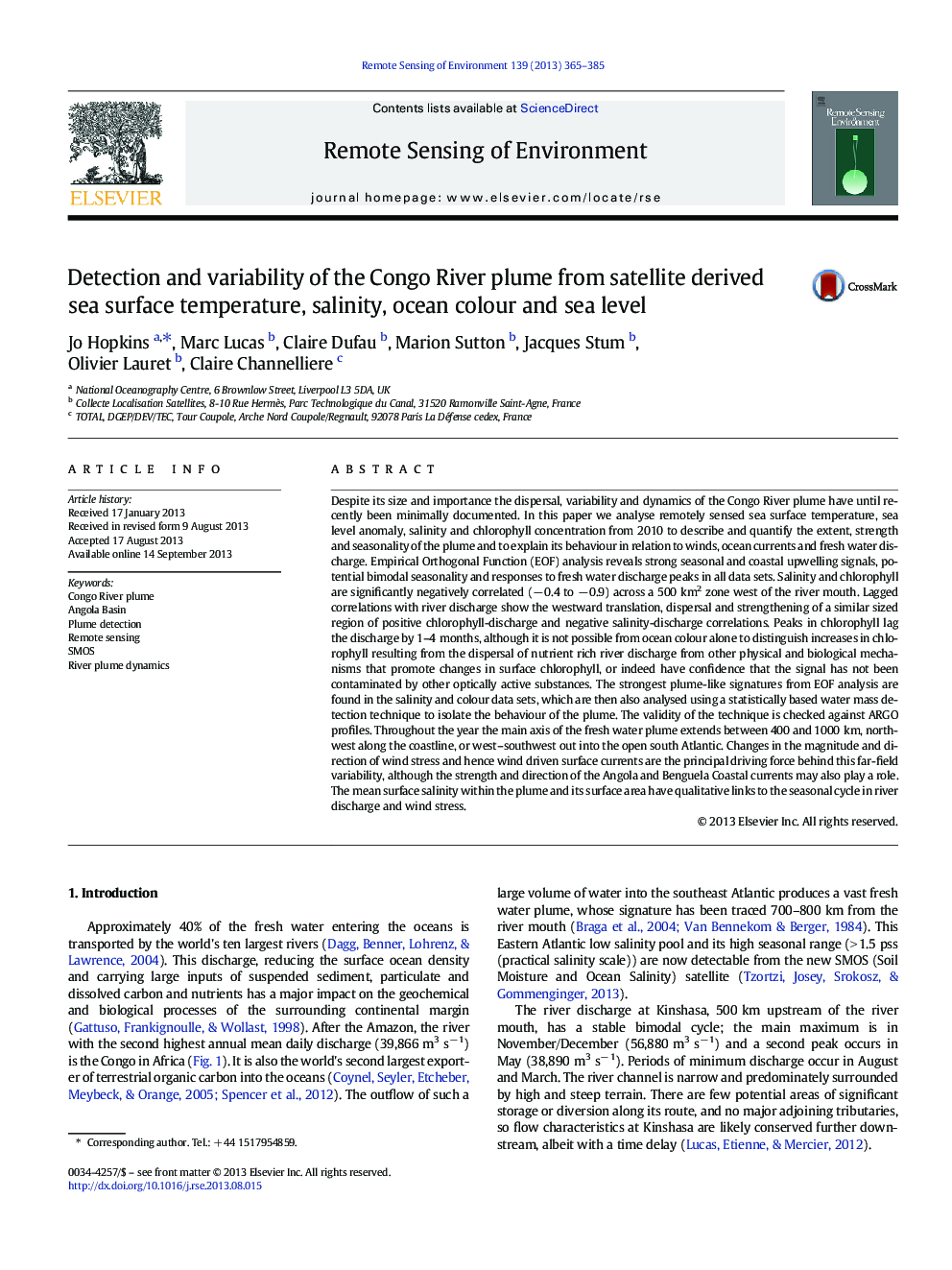| کد مقاله | کد نشریه | سال انتشار | مقاله انگلیسی | نسخه تمام متن |
|---|---|---|---|---|
| 6347164 | 1621261 | 2013 | 21 صفحه PDF | دانلود رایگان |
عنوان انگلیسی مقاله ISI
Detection and variability of the Congo River plume from satellite derived sea surface temperature, salinity, ocean colour and sea level
ترجمه فارسی عنوان
تشخیص و تغییرپذیری رودخانه کنگو از ماهیت ماهواره حاصل از دمای سطح دریا، شوری، رنگ اقیانوس و سطح دریا
دانلود مقاله + سفارش ترجمه
دانلود مقاله ISI انگلیسی
رایگان برای ایرانیان
موضوعات مرتبط
مهندسی و علوم پایه
علوم زمین و سیارات
کامپیوتر در علوم زمین
چکیده انگلیسی
Despite its size and importance the dispersal, variability and dynamics of the Congo River plume have until recently been minimally documented. In this paper we analyse remotely sensed sea surface temperature, sea level anomaly, salinity and chlorophyll concentration from 2010 to describe and quantify the extent, strength and seasonality of the plume and to explain its behaviour in relation to winds, ocean currents and fresh water discharge. Empirical Orthogonal Function (EOF) analysis reveals strong seasonal and coastal upwelling signals, potential bimodal seasonality and responses to fresh water discharge peaks in all data sets. Salinity and chlorophyll are significantly negatively correlated (â 0.4 to â 0.9) across a 500 km2 zone west of the river mouth. Lagged correlations with river discharge show the westward translation, dispersal and strengthening of a similar sized region of positive chlorophyll-discharge and negative salinity-discharge correlations. Peaks in chlorophyll lag the discharge by 1-4 months, although it is not possible from ocean colour alone to distinguish increases in chlorophyll resulting from the dispersal of nutrient rich river discharge from other physical and biological mechanisms that promote changes in surface chlorophyll, or indeed have confidence that the signal has not been contaminated by other optically active substances. The strongest plume-like signatures from EOF analysis are found in the salinity and colour data sets, which are then also analysed using a statistically based water mass detection technique to isolate the behaviour of the plume. The validity of the technique is checked against ARGO profiles. Throughout the year the main axis of the fresh water plume extends between 400 and 1000 km, northwest along the coastline, or west-southwest out into the open south Atlantic. Changes in the magnitude and direction of wind stress and hence wind driven surface currents are the principal driving force behind this far-field variability, although the strength and direction of the Angola and Benguela Coastal currents may also play a role. The mean surface salinity within the plume and its surface area have qualitative links to the seasonal cycle in river discharge and wind stress.
ناشر
Database: Elsevier - ScienceDirect (ساینس دایرکت)
Journal: Remote Sensing of Environment - Volume 139, December 2013, Pages 365-385
Journal: Remote Sensing of Environment - Volume 139, December 2013, Pages 365-385
نویسندگان
Jo Hopkins, Marc Lucas, Claire Dufau, Marion Sutton, Jacques Stum, Olivier Lauret, Claire Channelliere,
